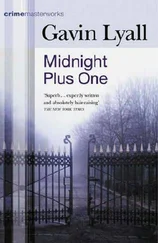“Okay, okay,” Wallach answered, sulking.
“Did she make a habit of leaving the apartment between five and five-thirty every afternoon?”
“Yeah.”
“Where’d she go?”
“There was a factory nearby the pad. Sometimes the guys coming out of work were good for a strike.”
“She did this every afternoon?”
“Not every afternoon, but often enough. When you’re in the shape she was in, you’ve got to take them where they come.”
“Where’s the factory?”
“Culver and North Fourteenth.”
“So then almost every afternoon, sometime between five and five-thirty, she’d leave the apartment and walk up toward the factory, right?”
“Yeah.”
“Who knew this besides you, Wallach?”
“The cop on the beat knew it,” Wallach answered, unable to repress the crack. “Maybe he’s the one who put the blocks to her, huh?”
“Look, Wallach…”
“All right, all right, I don’t know who knew it. The guy who killed her, I guess. Anybody coulda known it. All they had to do was watch.”
“You’ve been a great help,” Carella said. “Get the hell out of here.”
“You only ruined my day,” Wallach said.
He rose, dusted cigar ash off his trousers, and was walking away from the desk when Meyer kicked him square in the behind. Wallach didn’t even turn. With great dignity he walked out of the squadroom.
So far, the police had done only one concrete thing toward solving the multiple murders: nothing.
That morning, after Wallach left, they tried to remedy the situation somewhat by putting in a call to Samuel Gottlieb of Gottlieb, Graham and Norden. They asked the senior partner of the firm how many criminal cases Norden had handled since he’d been with them, and he told them there had been a total of four. He promptly furnished them with the names of all four clients, and then broke the list down into those who had been acquitted, and those who had been convicted. They then took the list Mrs. Norden had given them, the one containing the names of the various other firms Norden had worked for over the years, and by 11:00 they had called each firm and had a further list of twelve convicted criminals who had once been clients of Norden. They sent the list to the city’s BCI with a request for the whereabouts of each man, and then checked out a car and drove downtown to Ramsey University, where they hoped to learn something, anything, about Blanche Lettiger, the dead prostitute.
The university was in the heart of the city, beginning where Hall Avenue ended, sprawling on the fringes of the Quarter, rubbing elbows with Chinatown. An outdoor art exhibition was in full swing on the bordering side streets. Carella parked the car in a no-parking zone, pulled down the sun visor with its hand-lettered sign advising policeman on duty call, and then walked with Meyer past the canvases lined up on the sidewalk. There seemed to be a predominance of seascapes this year. The smiling perpetrators of all this watery art peered hopefully at each passerby, trying to look aloof and not too eager, but placed nonetheless in the uncomfortable position of being merchants as well as creators.
Meyer glanced only cursorily at the seascapes, and then stopped before an “action” painting, the action consisting of several bold black slashes across a field of white, with two red dots in one corner. He nodded mysteriously, and then caught up with Carella.
“What happened to people?” he asked.
“What do you mean?” Carella answered.
“There used to be a time when you looked at a painting, there were people in it. No more. Artists aren’t interested in people. They’re only interested in ‘expression.’ I read about a guy who covers a nude lady with paint, and then she rolls on a canvas, and what comes out is a painting.”
“You’re kidding,” Carella said.
“I swear to God,” Meyer said. “You can see where she rubbed with her leg or her thigh, or whatever. She’s like the guy’s paintbrush.”
“Does he clean his brushes at the end of the day?”
“I don’t know. The article didn’t say. It just told about how he worked, and it showed some examples.”
“That’s pretty far-out, isn’t it?”
“No, I think it’s a return to tradition.”
“How so?”
“The guy is obviously putting people back into painting.”
“There’s the school,” Carella said.
Ramsey University sat on the other side of a small park struck with May sunshine. There were several students sitting on the scattered benches discussing the conjugation of the verb aimer, discussing too the theory of ratio-mobility. They glanced up momentarily as Meyer and Carella crossed the park and climbed the steps of the administration building. The inside of the building was cool and dim. They stopped a student wearing a white shirt and a loose green sweater and asked him where the records office was.
“What records office?” the student asked.
“Where they keep the records.”
“Records of what? You mean the registrar?”
“We mean records of past students.”
“Alumni, you mean?”
“Well, we’re not sure this student ever graduated.”
“Matriculated students, do you mean? Or nonmatriculated?”
“We’re not sure,” Carella said.
“Day session or night?” the student asked.
“Well, we’re not sure.”
“Which college, would you know that?”
“No,” Carella said.
The student looked at him curiously. “I’m late for class,” he said at last, and wandered off.
“We get an F,” Meyer said. “We came to school unprepared.”
“Let’s talk to the dean,” Carella said.
“Which dean?” Meyer asked, peering at Carella as the student had done. “Dean of admissions? Dean of men? Dean of women? Dean Martin?”
“Dean I see you someplace before?” Carella said, and Meyer said, “Ouch!”
The dean of admissions was a nice lady in her early sixties who wore a starched ruffled blouse and a pencil in her hair. Her name was Dean Agnes Moriarty, and when the detectives said they were from the police, she immediately quipped, “Moriarty, meet Holmes and Watson.”
“Carella and Meyer,” Carella said, smiling.
“What can I do for you, gentlemen?”
“We’re interested in whatever information we can get about a woman who was once a student here.”
“When?” Miss Moriarty asked.
“We don’t know. Sometime before the war, we believe.”
“When before the war? This university was founded in 1842, gentlemen.”
“The girl was forty-one years old when she died,” Meyer said. “We can assume…”
“Died?” Miss Moriarty asked, and she raised her eyebrows slightly.
“Yes, ma’am,” Meyer said. “She was killed last night.”
“Oh,” Miss Moriarty nodded. “Then this is serious, isn’t it?”
“Yes, ma’am.”
“Oh. Well, now, let’s see. If she was forty-one years old—most of our students begin at eighteen, which would make this twenty-three years ago. Do you have any idea which college she was enrolled in?”
“No, I’m afraid we haven’t.”
“Shall we try the school of liberal arts?”
“We’re entirely in your hands, Miss Moriarty,” Carella said.
“Well, then, let’s see what we can find out, shall we?”
They found out that Blanche Ruth Lettiger had indeed enrolled in the Liberal Arts College of Ramsey University as a speech and dramatics major in 1940; that she had given her age as eighteen at the time, and her home address as Jonesboro, Indiana, a town with a population of 1,973, close to Kokomo. She had listed her temporary address at 1107 Horsely Road, in the Quarter. She had remained at the school for one term only, a matter of less than five months, and had then dropped out. Her withdrawal was somewhat mysterious, since she was an honor student with a 3.8 index, close to the perfect 4.0. Miss Moriarty had no idea where Blanche Lettiger had gone after her dropout. She had never returned to the school, and had never attempted to contact them in any way.
Читать дальше












